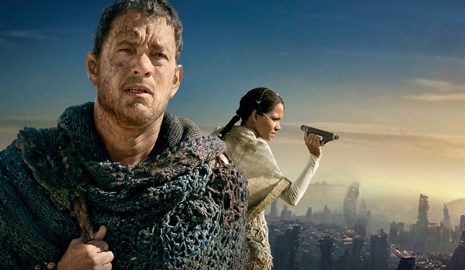You’re Getting Conscious — Even If You Didn’t Know It

Did you see Life of Pi or Cloud Atlas? How about Prometheus or Avatar? Have you picked up a bestseller by Deepak Chopra or Eckhart Tolle? Do you ever leaf through an inspirational book before leaving the yoga studio or do meditation videos at home? Have you watched My Neighbor Totoro or The Last Airbender with your kids, or downloaded PlayStation’s best-selling game Journey?
If you said yes to any of these, we’re not surprised. You’re part of an exploding audience of Conscious Media consumers. Over 100 million people in the U.S. are engaging with Conscious Media each year, and many don’t even realize they are doing it.
We call these folks “The Unconscious Conscious,” and they represent a huge shift in culture. To understand why, it’s important to understand what Conscious Media is in the first place.
Conscious Media refers to any kind of content that uses alternative modes of thinking to explore and understand the human condition and the alignment of the physical and spiritual self. Conscious Media naturally questions the status quo and provokes its audience to reconsider the range of possible questions and answers to the world’s problems.
At its most basic, you will find Conscious Media in the kinds of self-help books that advocate mindfulness or mind-body connection. Individuals experiencing a life transition, such as the death of a loved one, the end of a relationship or a career change, often seek out Conscious Media in an effort to understand and address their life circumstance.
But the tenets of Conscious Media, particularly the idea of “Oneness” or the interconnectedness of all life (see our Oneness Deep Dive for more information), have found their way into science fiction, children’s programming and video games as well, permeating the popular consciousness in ways that are permanently shifting our expectations about the kinds of stories and content with which we want to engage. This kind of content opens our minds to alternate ways of viewing the world.
Life of Pi, which has made over half a billion dollars at the box office so far and has been nominated for 11 Oscars, is an example of Conscious Media being consumed by mainstream audiences. In the film (based on a popular novel by Yann Martel), the main character is a boy adrift at sea on a life raft, with a killer Bengal tiger his only companion. The beautifully shot film takes the viewer on a spiritual journey as the main character confronts the physical and emotional challenge of his predicament. When the boy is finally rescued and his tiger companion has abandoned him, he tells his fantastical tale to an incredulous insurance adjuster, who requests a more plausible story. Life of Pi concludes with a question to its viewers — which story do you want to believe, the plausible, pedestrian one, or the one that opens your eyes to the possibilities of what the world might hold if we weren’t bound by conventional expectations.
As the influence of Conscious Media grows, an “unconscious” audience is slowly but surely being exposed to ideas and principles that are shaping all aspects of culture, community and society. And as Conscious Media opens consumers’ eyes, hearts and minds to alternative worldviews, it is not just media creators who need to take notice. Producers of all kinds of ideas and products must reflect on how they shape their communications and messaging to more effectively interact with the “unconscious conscious” audience whose expectations are evolving.
To learn more about the explosion of Conscious Media and the mindset of the new conscious consumer, please download our whitepaper or our Deep Dive report on Oneness.





